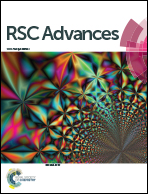Different morphologies of polypyrrole produced by flow-through and batch electropolymerizations: application in electrochemically controlled in-tube solid phase microextraction
Abstract
In this paper, polypyrrole (PPy) was electropolymerized with perchlorate ion on the inner surface of stainless steel tubes (in-tube) and also on stainless steel wires. A batch electropolymerization and three modes of in-tube flow-through electropolymerization were investigated. Electrosynthesis of PPy-ClO4 was observed in all the mentioned modes, ascertained from the similarity of the infrared spectra of their products, despite their quite different morphologies. According to the position of the counter electrode (relative to working electrode) and the geometry of the working electrode, different morphologies and thicknesses can be produced. Furthermore, the PPy tube formed by the flow-through electropolymerization was used in electrochemically controlled in-tube solid phase microextraction (EC in-tube SPME). EC in-tube SPME decreased the total analysis time and increased the sensitivity. It was found that the extraction efficiency could be greatly enhanced by using a constant potential.


 Please wait while we load your content...
Please wait while we load your content...